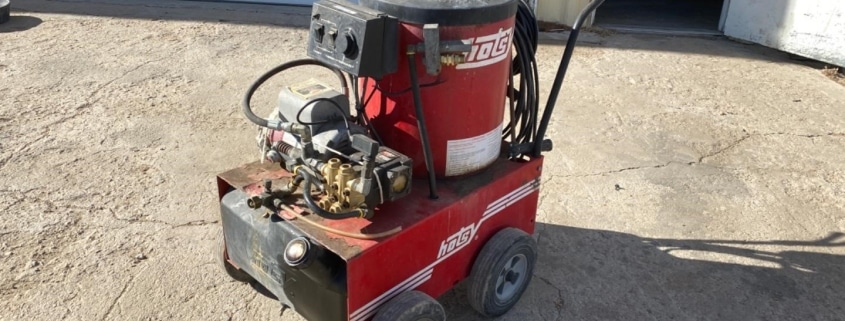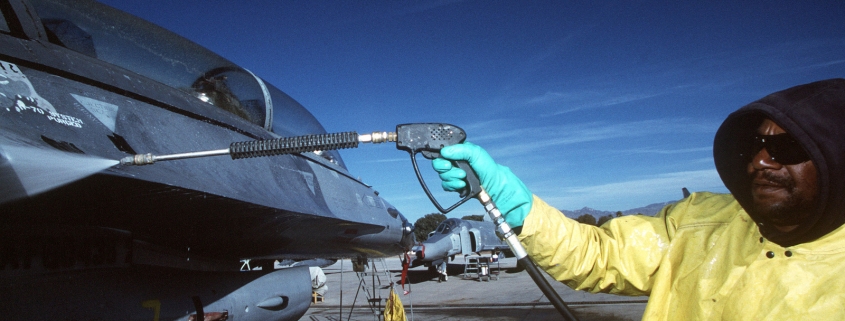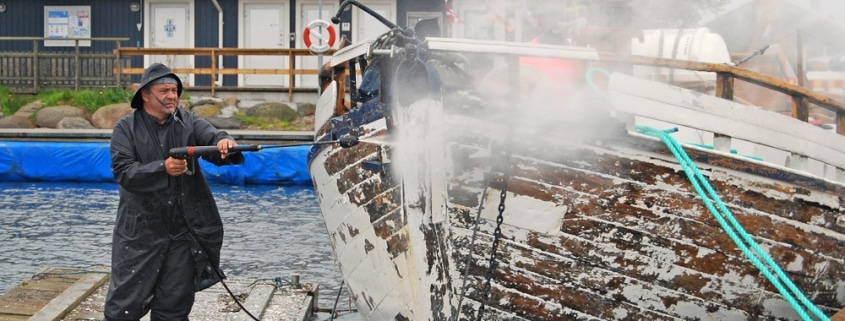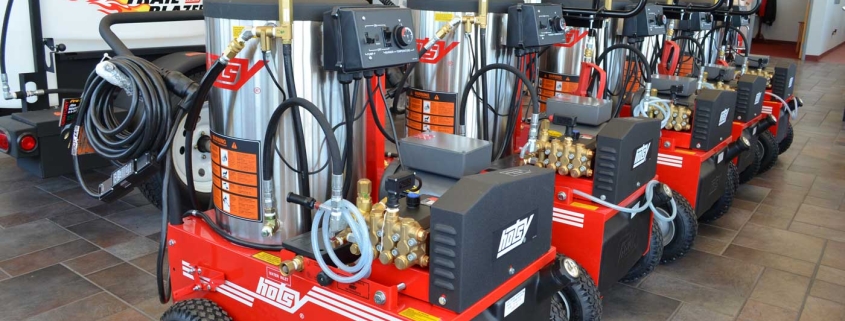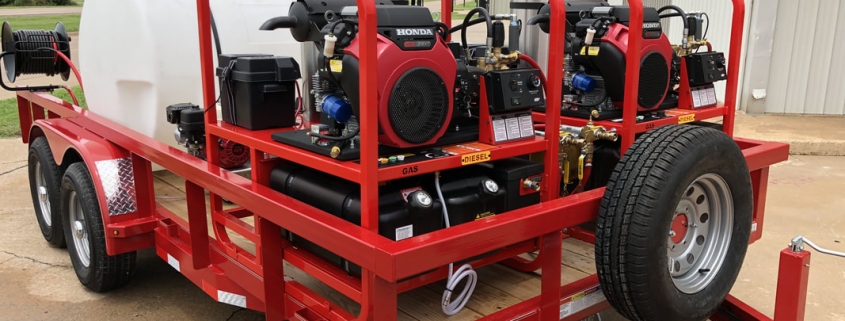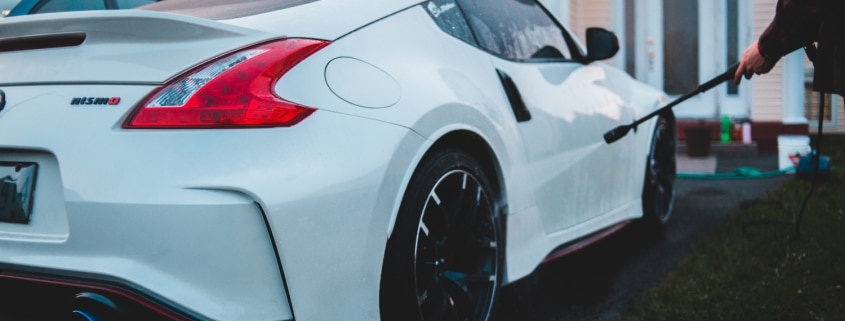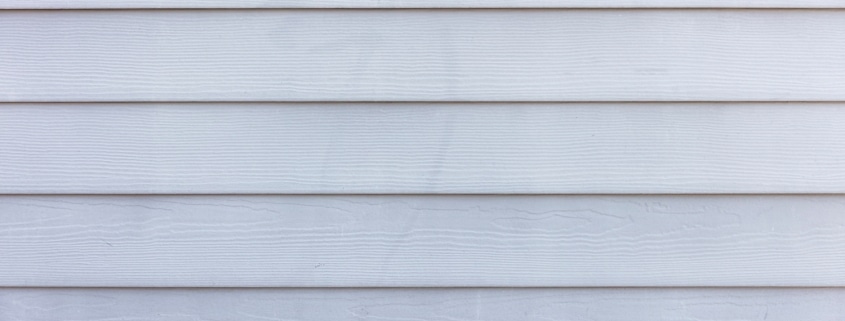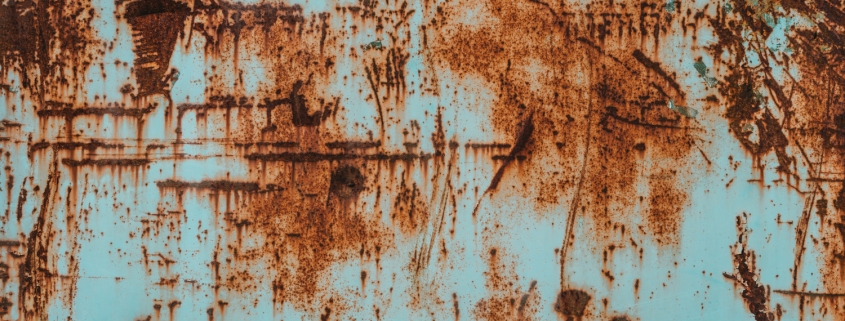How long can you run a pressure washer? This is one of the most common questions we get here at Hotsy. As a business owner, you will spend a lot of time using your machine. In fact, there may be 8-hour days where all you and your team are doing is running your unit! But do you need to give the machine breaks throughout the day? And if so, how frequently?
In this article, you’ll learn the answers to these two questions and many other related queries you may have. In short, you want to give gas pressure washers more breaks than electric units – which are more forgiving. Either way, your unit should be given a short break from continuous use every 30 minutes or so. Other factors – like outdoor conditions, your specific unit, and the intensity of cleaning power necessary will dictate the recommended downtime frequency, though. More on that later.
We’ll start by talking about what can happen if you run your pressure washer too long, and provide other safety tips for keeping your machine safe, efficient, and optimized for performance. Let’s start by talking about the risks at play.
Why You Need To Know How Long You Can Continuously Run A Pressure Washer
If you’ve ever used a pressure washer, you know how quickly it can overheat. This is especially true for gas models. Electric models are a bit more forgiving, but will still shut down if they get too hot. So, it’s important to understand how long you can run your machine before giving it a break. But it’s not just about preventing pressure washers from overheating.
Not only will this help prolong the life of your investment, but it will also ensure that you’re using the machine as safely and efficiently as possible. Let’s look at some of the risks associated with running a pressure washer for too long:
- Overheating: As we mentioned, one of the biggest risks is overheating. This can damage internal components and lead to costly repairs or replacements. This is not an investment you want to make twice if you can avoid it – so preventing overheating is important.
- Poor Performance: Another risk is that the machine will start to perform poorly. This can be due to a loss of power or water pressure. When it comes to your business, a poor-performing power washer is a detriment. It leads to inefficiency, and thus, lower profitability.
- Safety Issues: Finally, there are safety concerns. If the machine is not functioning properly, it could pose a danger to you and your team. Read our guide on pressure washer safety for more information.
All things considered, understanding how long you can continuously run a pressure washer is one of the many key elements of pressure washer maintenance. Now that we’ve looked at some of the risks, let’s answer the question – how long can you continuously run a pressure washer?
How Long Can You Run A Pressure Washer?
The answer to this question depends on several factors, including the type of machine you have and the conditions in which you’re using it. Here’s a more detailed look at each factor:
- Machine Type: Gas pressure washers can typically run for about 30 minutes before they need a break. Electric models can usually go for an hour or more. If you’re using a hot water pressure washer, you’ll need to give it breaks more frequently – about every 15 minutes. Of course, the best pressure washers will be capable of running longer than inferior models. This is part of what makes them “the best”.
- Conditions: The operating conditions also play a role in how long you can run your machine. If it’s hot outside, the machine will overheat more quickly. Similarly, if you’re using it for heavy-duty cleaning jobs, it will put more strain on the components and require more frequent breaks.
Now that we’ve answered the question – how long can you continuously run a pressure washer? – let’s look at some safety tips for running your machine:
Is There Anything You Can Do To Run A Pressure Washer Longer?
Time is money, and taking downtime to give your pressure washer a break represents wasted time – and thus, wasted money. With that said, you’re probably wondering if there is anything you can do to prevent this downtime. Fortunately, there are a few things you can do to help your machine run longer:
- Use a lower pressure setting. This will reduce the strain on the pump and help prevent overheating.
- Use a larger tip. A larger tip will allow more water to flow through, which will help keep the unit cooler.
- Use an extension hose. An extension hose will give you more flexibility and reduce the risk of kinking, which can lead to reduced water flow and increased heat buildup.
- Give it breaks. As we mentioned, it’s important to give your machine breaks throughout the day – even if it’s just for a few minutes. This will help prevent overheating and extend its lifespan overall.
Additional Safety Tips For Running A Pressure Washer
Understanding how long you can continuously run a pressure washer is paramount to keeping it in tip-top shape. It will improve your cleaning performance, keep your machine dialed in, and keep everyone operating the unit and nearby safe. But, giving the unit a break here and there isn’t all you can do to optimize the safety and performance of your pressure washer. Here are a few more tips to keep your machine safe – and improve performance:
- Inspect the unit before each use.
- Check for leaks.
- Never point the nozzle at yourself or anyone else.
- Use the correct tip for the job at hand.
- Follow the manufacturer’s operating instructions.
By following these tips, you can help ensure that your pressure washer is safe and performing optimally – no matter how long you run it continuously. So, there you have it – everything you need to know about running a pressure washer continuously.
How Long Can You Run A Pressure Washer? Closing Thoughts
That just about concludes our discussion today. We’ve answered the question – how long can you run a pressure washer? And now, you also recognize the importance of giving your machine breaks on a routine schedule. Not only will this extend the life of your machine and prevent wear and tear. But, it will also improve the performance of your machine. While the downtime does suck, you can work on other things while the machine cools off – and when you return, the unit will be ready to work more effectively and efficiently. If you’ve been running your machine too long and feel it is impacting the performance of your unit, bring it in for a pressure washer service. We’ll get it taken care of for you.
At this point, you’re ready to start cleaning like the pros do. And if you’re in need of a reliable lineup of commercial hot water pressure washers, you’re in luck. At Hotsy, we’ve earned the reputation as the #1 Pressure washer store in San Antonio and throughout the country. We’ve got all the various types of machine your business needs – no matter what it is you do. Take a look at our extensive catalog or reach out for a recommendation. We’re passionate about helping you get the cleaning power you need. Nothing cleans like a Hotsy – and if you’re not convinced, it’s time you found out firsthand!

